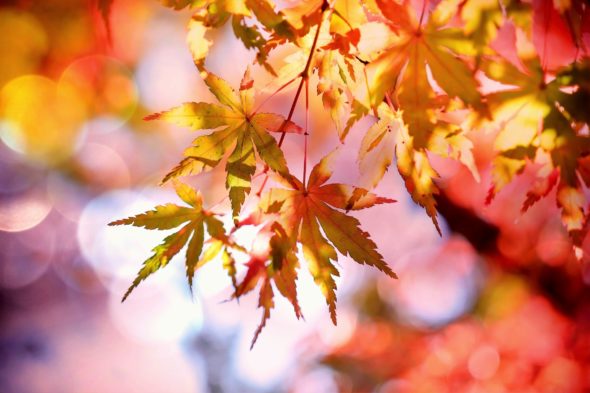
As you relish the final days of summer, your body begins to respond to the approaching fall chill.
What you see happening around you in the environment is also what’s happening inside your body.
Ayurveda teaches you how to live in alignment with the rhythms of nature. In this blog post, I share how to successfully transition to fall using Ayurveda, food and Ayurvedic nutrition.
When you follow the simple principles of Ayurveda, you are so much more likely to feel happy, healthy and strong!
Here’s the deal…
When weather cools down in fall, your body uses any fat it can to insulate against colder times ahead. Your blood becomes thinner and you have a harder time holding onto moisture.
Now, for round and heavy-set peeps – true Kapha body types – this is great news! Fall is Vata time and as it approaches, heavy/wet/congested Kapha can feel unusually light.
But for the rest of us, especially those of us who already run light and dry, it means we need to set our nutritional hydration NOW for health and strong immunity moving forward.
There are several seasonal foods that will help you feel your best as you navigate summer to fall’s transition the Ayurvedic way. No doubt, you’ve noticed them covering the ground in your garden and for sale at your local farmer’s market.
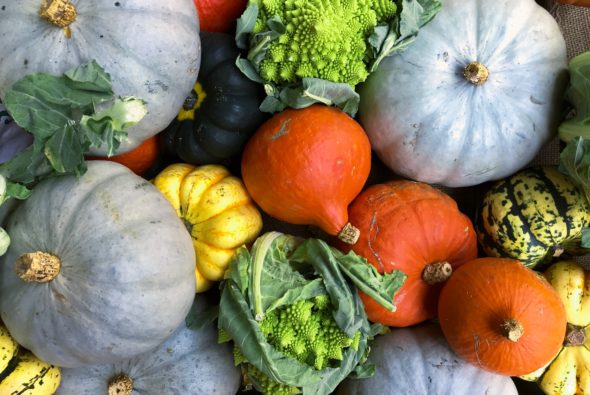
Below you’ll find a list of the best foods to eat as summer turns to fall. I’ve included quick notes on how to enjoy and prepare them as well! Check out the food list and recipes to enjoy when transitioning to fall with Ayurveda…
Peaches!
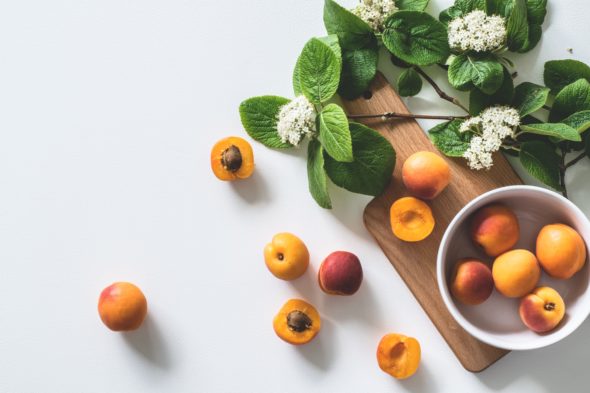
We think of them as sweet. But peaches are slightly sour, which means they promote elimination and strengthen digestion. Plus, they’re yummy!
Enjoy fresh peaches 30 minutes before any meal – with a smattering of coriander, cinnamon or nutmeg. Alternatively, cook them on the grill with ghee and cumin seed or roast them in coconut oil and cardamom. Toss cooked peaches with romaine lettuce, spinach, and sprouted pumpkin seeds.
Vine-Ripe tomatoes!

Like peaches, tomatoes are sweet, sour, and heating. They belong to the nightshade family. Which means they’re acidic and can cause or contribute to inflammation.
I’ve lived with autoimmune for 17 years and tomatoes fresh from the vine don’t bother me when I eat them now. Yet, you may want to avoid them if chronic inflammation is an issue for you.
If tomatoes are a staple in your diet – particularly tomato paste and cooked sauces – try omitting them for a month and see if you notice any relief from pain, swelling or heat. Then add in only fresh tomatoes – you may see a shift!
I love eating sliced tomatoes as a midday snack. I garnish them with olive oil, fresh minced basil, sumac, good salt and a dash of black pepper. This same combo could easily be added to a breakfast of eggs, greens, and ghee-smothered toast.
Olive Oil!
Have you tried FRESH olive oil? Oh my gosh, it’s up there with tasting artisan wine and single origin chocolate! Heavy, warming and bitter, it’s packed with flavor and moisturizes your body (from the inside out) like little else does.
In addition to oils you cook with, add 1 to 2 Tablespoons of first cold-pressed olive oil to your meals each day.
However, don’t cook with it! Olive oil doesn’t have a high enough smoke point to warrant even a quick sauté. Cook with ghee, grass-fed butter or rice bran oil and get the omega fatty acids your body needs from fresh, raw olive oil.
If olive oil isn’t your personal fave, or you find it a bit too heavy, use any healthy fat on the daily. Avocado, hempseed oil, pumpkin seed oil, flaxseed oil, coconut milk, coconut butter, and ghee are top on my list for fall nutrition.
Yellow Summer Squash!
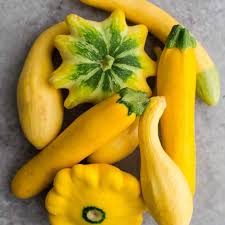 Joyful Belly (one of my favorite Ayurvedic sister sites) says this about yellow summer squash: “it appeals to the eyes, while its soothing and cooling qualities assuage late-summer exhaustion due to heat. A taste of these sweet, watery vegetables rehydrates and cools you off after a long day under the sun.”
Joyful Belly (one of my favorite Ayurvedic sister sites) says this about yellow summer squash: “it appeals to the eyes, while its soothing and cooling qualities assuage late-summer exhaustion due to heat. A taste of these sweet, watery vegetables rehydrates and cools you off after a long day under the sun.”
Sounds pretty nourishing, right? I was cooking for a client yesterday and made a simple stir-fry from yellow squash, rainbow chard, kale, dandelion greens, ground coriander, and ghee.
We used nothing else and it was pure YUM! Not to mention super easy to digest. Top a stir-fry like this with hemp seeds and serve it over quinoa for a complete protein meal.
Miso Paste!
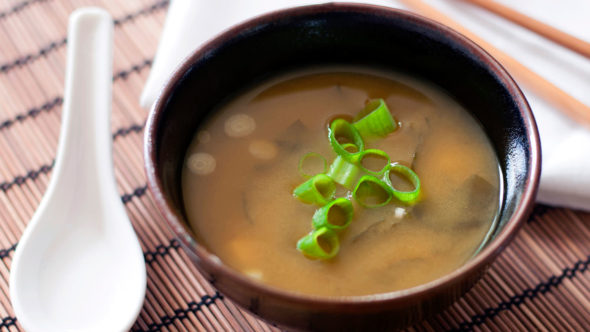
I’m not one to lean on soy as a protein source. Unless you’re a child with a broken bone to mend or in menopause with low estrogen, whole soy won’t do too much for you. It’s cold, heavy and hard to digest.
On the other hand, fermented soy (found in tempeh and miso paste) is warm, salty, pleasantly sour and easy to assimilate. I love miso paste made from soy, adzuki beans or chickpeas. South River Miso Company and Miso Masters are my favorite brands. Here’s a recipe for a tasty miso soup you can drink all autumn long!
Talya’s Soy-Free Miso Soup
VP-K=
Preparation Time: 15 minutes
Yield: About 4 servings
Ingredients:
4 cups purified water
1 fresh garlic clove, minced
½-inch fresh ginger root, minced
1/2 teaspoon ground coriander
1/4 cup packed sea palm, arame or wild nori
1/4 cup miso paste, any organic and soy-free variety (like adzuki bean or chickpea)
2 whole green onions, minced
4 tablespoons shredded daikon radish
Put the water, garlic, and ginger in a medium saucepan over medium-high heat and bring to a boil. Add the sea palm, cover and lower heat to simmer for 10 minutes. Remove from heat. Stir in the miso paste until it dissolves. Add the green onions and top each serving with a Tablespoon of shredded daikon radish.
Raw Pumpkin Seed Butter!
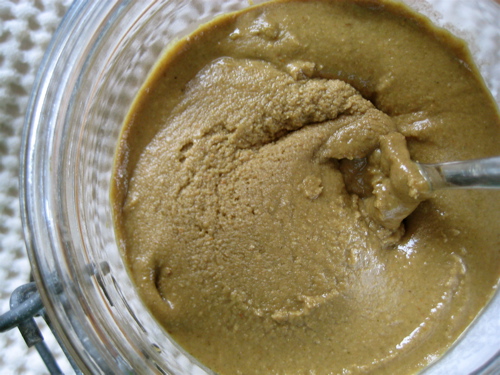
The first time I made raw pumpkin seed butter from scratch, I was like, “Are you kidding me?? This is so EASY. And AMAZING!!!”
I’m hooked on this as a staple in my home. Raw pumpkin seed butter tastes great on almost anything. Try it on top of baked sweet potatoes, sprouted grain toast, oatmeal, and Paleo pancakes. Or eat it like I do – straight out of the jar with a bit of raw honey and cardamom. Tell me in the comments below how you love to eat it!
And… did you know? Pumpkin seeds are rich in trace minerals, blood sugar balancing, and blood building! They’re also warming, anti-fungal, anti-microbial, alkaline-forming and packed with iron plus antioxidants.
Here’s the recipe that blew my mind the first time I made it:
Fresh Pumpkin Seed Butter
V-PK=
Preparation Time: 5 minutes
Yield: About ¾ cup
Ingredients:
1 cup fresh raw pumpkin seeds
2 Tablespoons olive oil
2 teaspoons raw honey
Pinch of high-quality, mineral-rich salt
Use a food processor or high-speed blender to grind the pumpkin seeds into a fine powder. Transfer the ground pumpkin seeds to a food processor. Turn on the food processor and drizzle in the olive oil until the mixture becomes as creamy as you like. Whirl in the honey and salt. It’s crazy amazing good.
Pears!
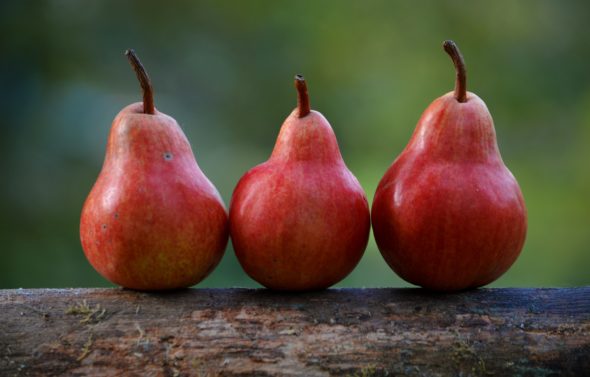
One of my favorite fruits for the Kapha dosha, pears soothe the heart and nourish the lungs. They’re cooling when you eat them in large quantities, so I’m a fan of pears that are cooked and spiced for warmth.
Speaking of lungs, did you know that’s where the emotion of grief is stored? Pears can help you expectorate not only excess phlegm and fluid but sadness, too!
Pears are demulcent and moistening. They bring relief to coughs and colds and are revered in Ayurveda for a slippery fiber that aids elimination.
Heavenly Baked Pears
V=PK-
Preparation Time: 45 minutes
Yield: About 6 servings
Ingredients:
6 organic pears, any variety
2 cups organic pear or apple juice
6 to 8 fresh or dried figs, finely chopped
½ cup organic raisins
1/3 cup coarsely chopped raw almonds
¼ cup raw sunflower, hemp or pumpkin seeds
1 Tbs. cinnamon
1 teaspoon ground cardamom
1 teaspoon organic lemon peel, dried or fresh
½ teaspoon ground ginger root
¼ teaspoon ground nutmeg or mace
2 Tablespoons ghee
1 Tablespoon raw honey
Preheat the oven to 350 degrees. Wash and core the pears, leaving them whole and unpeeled. Place the pears in an 8×8 baking dish.
Mix the figs, raisins, almonds, seeds, and spices together in a small mixing bowl. Stuff the fig mixture firmly into each one of the cored pears. Pour apple juice into the pan and over all the pears. Cover and bake for 45 minutes or until the pears are fork tender.
In a small bowl, combine the ghee and honey. When the pears come out of the oven, spoon a dollop of this sauce over each one. Sprinkle with cardamom and immerse yourself in pear heaven.
Ashwagandha!
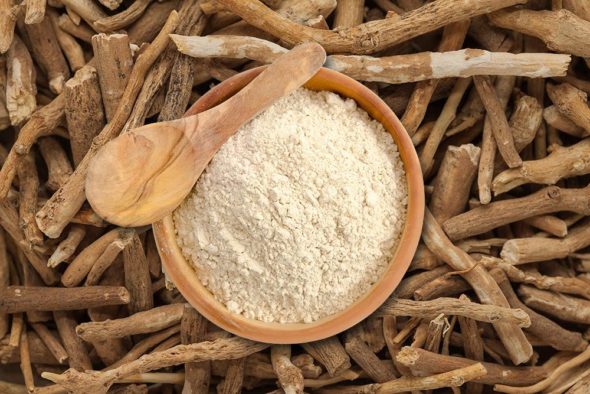
One of Ayurveda’s premier rejuvenating herbs, ashwagandha is said to give men “the vital energy of a horse.” Whoa. A strengthening root, ashwagandha is a renowned brain tonic and immune-boosting supplement. It mends all types of debilitating conditions. Regular use of ashwagandha helps repair deep nervous system issues and depleted adrenals.
Sometimes known as “Indian ginseng,” ashwagandha revitalizes your mind and body. It stress-reducing, insomnia-relieving and helps produce ojas (vital fluids).
It’s also sattvic, pure and balancing. It’s one of the best herbal remedies for people who suffer from old age, overwork, insomnia, and exhaustion.
We all know that times of transition can be stressful and anxiety-producing. If you notice yourself going off kilter – or you feel run down – use Ashwagandha to help you feel calm and energized.
Ashwagandha Milk Tea
VK-P+
Preparation Time: 10 minutes
Yield: Serves One
Ingredients:
1 cup almond milk, hemp milk or oat milk
3/4 teaspoon ground ashwagandha
1/4 teaspoon ground cardamom or cinnamon
Pinch nutmeg or saffron
1 teaspoon ghee or coconut butter, optional
½ teaspoon raw honey, coconut nectar or maple syrup
Gently heat the milk over medium-low heat until warm. Pour into your favorite mug. Stir in the ashwagandha, spices, optional ghee and sweetener. Drink consistently to receive maximum effects!
Jicama!
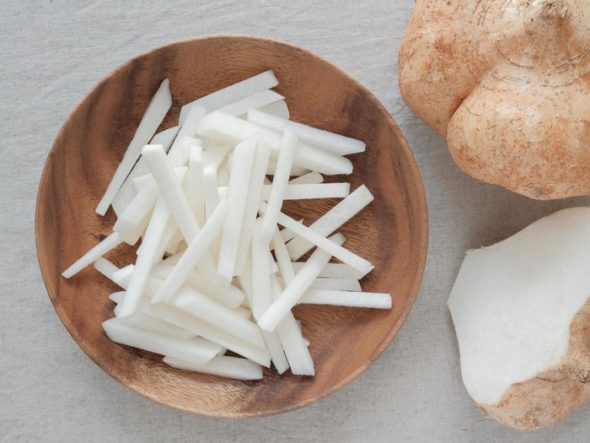
Enjoy jicama instead of chips the next time you’re hankering for salsa, hummus, cashew cheese or guacamole. They also make amazing low carb fries!
Cucumber!
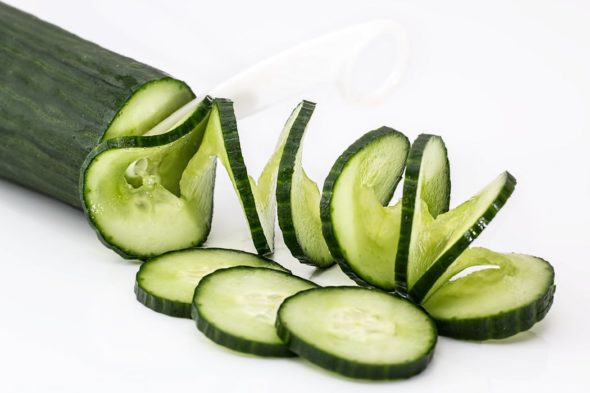
Just today I got to harvest cucumbers straight from the vine! Cool, juicy and hydrating… add cucumber slices to water when you want to soothe inflammation or chronic dryness. Alternatively, make this quick and easy end of summer soup!
Creamy Cucumber Soup
V+PK-
Preparation time: 15 minutes
Yield: 4 Cups
Ingredients:
2 cucumbers, peeled, seeded and roughly chopped
1 small-medium zucchini, roughly chopped
1/2 head romaine or green leaf lettuce, chopped
1 cup water, fresh mint tea or fresh ginger tea
1 Tablespoon fresh lemon juice
½ teaspoon fresh ginger root, minced
½ teaspoon fresh garlic, minced
¼ teaspoon high-quality, mineral-rich salt
Dash black pepper
1 avocado, chopped
1 teaspoon olive oil
¼ cup fresh chopped mint, cilantro and/or dill
Dash cayenne pepper, optional
Blend the cucumber, zucchini, lettuce water, lemon juice, garlic, ginger, pepper, and salt until smooth. Add the avocado and olive oil, blend until smooth. Salt and spice to taste. Add the herbs and blend just enough to mix in. Serve at room temperature with an optional dash of cayenne pepper on top.
And here’s even MORE Best End of Summer Foods for your healthy transition to fall with Ayurveda:
* Organic Red Grapes
* Quinoa
* Winter Wheat Berries
* Manna Bread
* Hemp Seeds
* Sole
* Baked Sweet Potatoes
* Steamed or Roasted Root Vegetables
These foods strengthen your immunity and help you transition to fall with Ayurveda. They tighten the buffer between you and the outside world.
They’ll make your blood a little warmer, help moisture stick, and provide protection from the wind that gets kicked up in fall. In other words, they can help prevent you from shriveling up and falling ill as a result.
It’s important to note that some foods do the opposite – they deplete your body by being too dry, thin, crunchy or astringent.
Here’s a handful of foods you best avoid this time of year:
Most diuretics. This includes asparagus, popcorn, parsley, barley, and coffee.
Walnuts. They’re too astringent.
Millet. It’s too drying.
Dried Fruit. Especially if they haven’t been reconstituted in water. They’re too dry and high in concentrated sugar.
All Crackers and Chips. They’re too dry and crunchy. Enjoy whole, cooked grains instead.
Chia Seeds. They’re blood thinners. While they may not wreak havoc for you, it’s good to acknowledge that they can thin the blood.
Cold and Refrigerated Foods. Warm up leftovers before you eat them. And if you’re enjoying something like yogurt or kefir, spice it up really well before you consume.
In conclusion… by following Ayurvedic principles and making small one-step-at-a-time adjustments to your diet and lifestyle, you can make a healthy transition between seasons and feel happier and healthier during the fall.
My Ayurveda Every Day With Talya Facebook Group is here to help you to transition to fall with Ayurveda! Join us! We have so much fun in there.

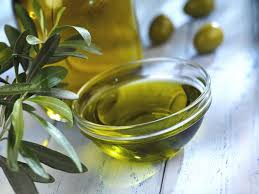
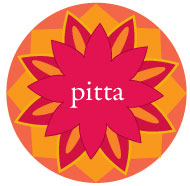
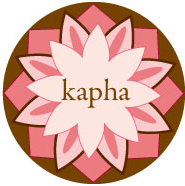
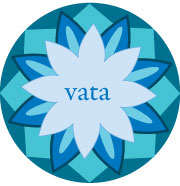
YOU ARE AWESOME AND I MISS YOU!!
Oh my gosh. Whitney! I love you and miss you so much, too!!! : D
Just Thsnk You??
: D
Talya
Thank you for the “beginner “series!
I have a question: what do notations at beginning of your recipes indicate. Such as…VP-K=
Hi Janet! You’re welcome : )
V stands for Vata. Vata = cold, light, dry, thin
P stands for Pitta. Pitta = hot, light, oily, sharp
K stands for Kapha. Kapha = heavy, wet, dense, slow
The “-“ symbol after V, P or K means that the recipe helps calm or decrease the dosha it follows.
The “+” symbol after V, P or K means that the recipe aggravates or increases the dosha it follows.
The “=” symbol after V, P or K means that the recipe has a neutral effect on the dosha it follow. The recipe neither increases or decreases the dosha it follows.
Would you explain why our blood would thin in cold weather?
It seems our blood thins when living in hot climates.
Hey Jan! Everyone’s different and quality of blood is a whole topic unto itself. But specifically in fall, after several months of movement and activity, blood thins because that’s how the body responds to cold. Cold constricts – it becomes colder, dryer, lighter, thinner. Your blood doesn’t automatically “thicken up” to protect itself against extreme cold weather, or even a shift in climate. So Ayurveda says you have to do it yourself with the kind of foods and practices I mentioned in this blog.
When you’re living in hot climates and sweating a lot, it’s possible that your blood could become thinner/lighter because you’re more sweating and active. Maybe you’re losing weight or “insulation” that you carry in other climates. But generally speaking, I’d say that’s not the case.
This is so helpful…I am surprised about the cucumber soup and happy to see that they are a thumbs up…Thanks for these tasty recipes to ease my vata Mind!
Awesome, Jane! : D
Perfect timing. I wondered what to eat this the of year. I love your blog.
Thanks, Charla Kay! I adore YOU!
With heartfelt Gratitude for sharing these beautiful recipes.
Thank you for helping me to expand my knowledge of Ayurvedic Medicine, which I love.
Awesome, Louise! Thank you for your kind words : )
Thanks! Love your wisdom and knowledge and your willingness to share it. This is so helpful as we in New England begin this transition to autumn.
xo!!!
I am looking forward to trying these recipes. Thanks ever so much. Xoxo
Mwah!
I don’t like to rush fall because it’s one of the best things about living in the NE, but I can’t wait for the fall RAD cleanse come October!
YAY!! Me too! It’s going to be incredible!!!!
https://www.talyaskitchen.com/rad-cleanse-fall/
Hi Talya, thank you for all your recipe suggestions . About Ashwaganda , I just bought capsules and was surprised that they are filled with Ashwaganda extract instead of the powder ! Do you think it is as beneficial as the powder ?
Hi Magdalene May! Extracts are usually more concentrated than the powder. So I definitely think it’s as beneficial as the powder… but your dose may need to be different. The best person for this question is actually KP Khalsa!